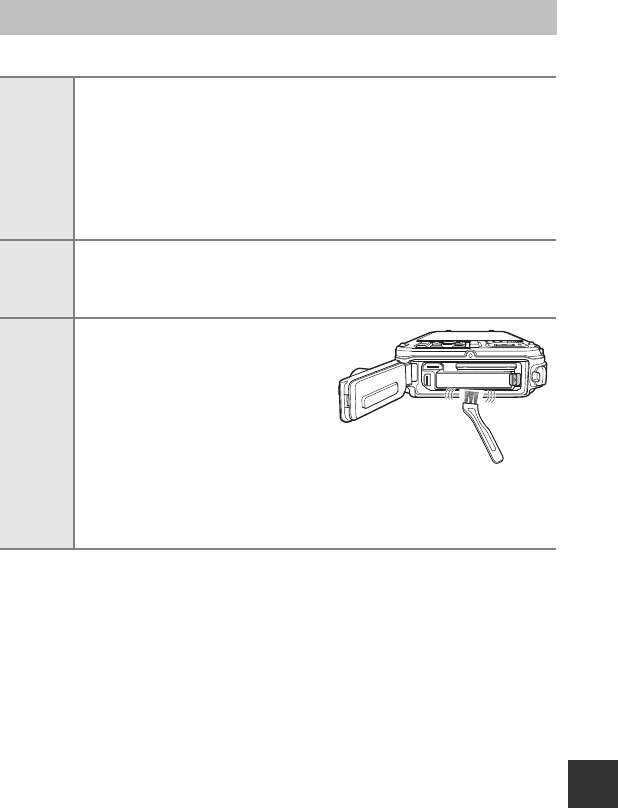
F7
Technical Notes and Index
Caring for the Camera
Cleaning
Do not use volatile organic solvents such as alcohol or thinner, chemical
detergents, anticorrosive agents, or anti-fogging agents.
C More Information
See “Notes on Waterproof and Dustproof Performances” (Axi) and “Cleaning
after Using the Camera Underwater” (Axiv) for more information.
Lens
Avoid touching glass parts with your fingers. Remove dust or lint with a blower
(typically a small device with a rubber bulb attached to one end that is
pumped to produce a stream of air out the other end). To remove fingerprints,
oily substances, or other stains that cannot be removed with a blower, carefully
wipe the lens with a dry soft cloth or eyewear cleaning cloth, using a spiral
motion that starts at the center of the lens and working toward the edges. Do
not wipe the lens forcibly or with a hard material. Failure to observe this
precaution could result in damage or trouble. If this fails, clean the lens using a
cloth lightly dampened with commercial lens cleaner.
Monitor
Remove dust or lint with a blower. To remove fingerprints, oily substances or
other stains, carefully wipe the monitor with a dry soft cloth or eyewear
cleaning cloth. Do not wipe the monitor forcibly or with a hard material. Failure
to observe this precaution could result in damage or trouble.
Body
Use a blower to remove dust, dirt, or
sand, then wipe gently with a soft, dry
cloth. If a foreign substance adheres to
the waterproof packing inside of the
battery-chamber/memory card slot
cover, remove it with the included brush.
After using the camera underwater or at
the beach, gently wipe off any sand or
salt with a soft cloth lightly dampened
with fresh water and dry thoroughly. If you handle the camera using hands
where sunscreen lotion is applied, this could cause deterioration of the camera
exterior. Note that foreign matter inside the camera could cause damage
not covered by the warranty.


















